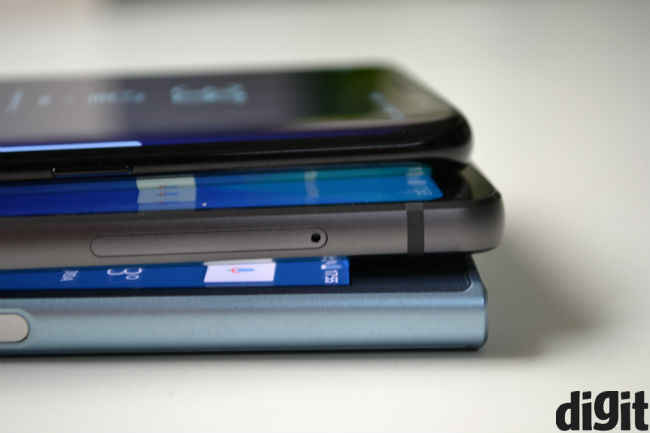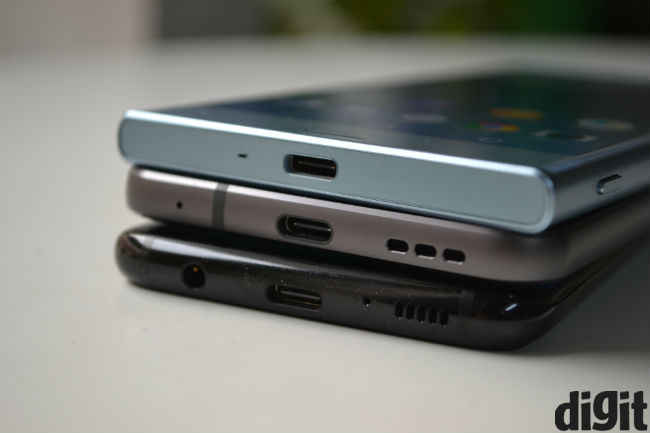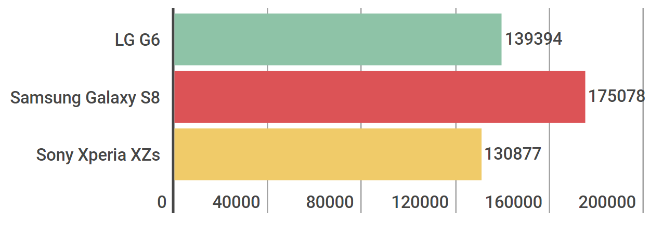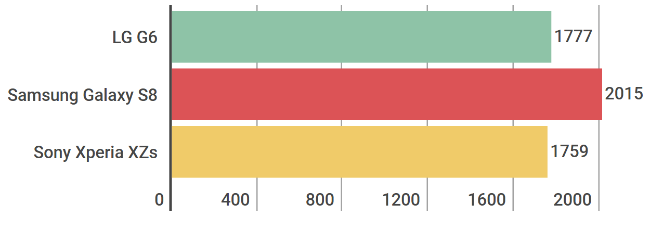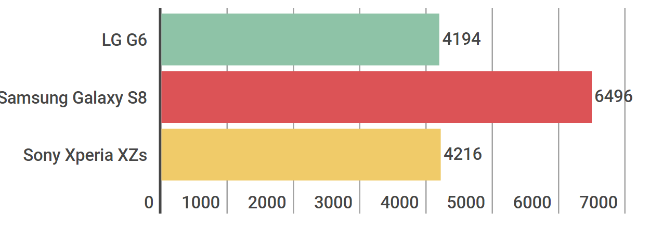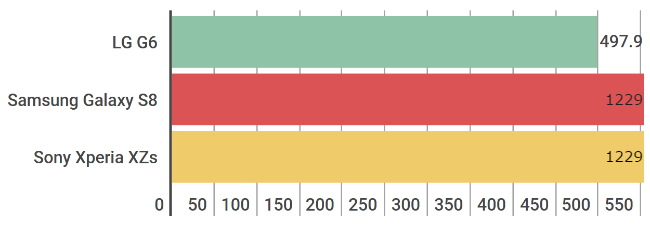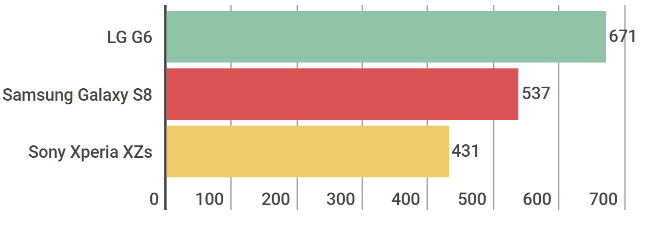Samsung Galaxy S8 vs LG G6 vs Sony Xperia XZs: Performance, Battery & Design comparison
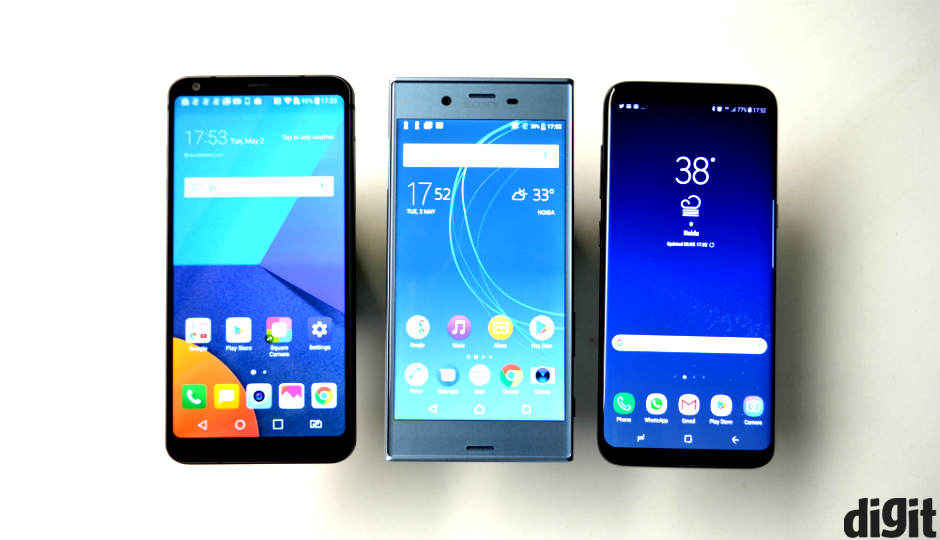
If you're buying a flagship smartphone, you're probably stuck deciding between the Samsung Galaxy S8, Sony Xperia XZs and the LG G6.
Flagship smartphones aren’t always affordable, but they do represent the best the market can offer. This year’s Pixel 2 is yet to arrive, so we can’t be sure whether this is the best Android will offer. However, the first three flagships of 2016 do have their own strong points. Samsung and LG are both ushering in new standards in smartphone design, while Sony took a leap towards “better” slow motion video recording.
Amidst all that though, the three are still comparable Android smartphones. In increasing order of price, we have the Sony Xperia XZs (Rs. 49,990), LG G6 (Rs. 51,990) and then the Samsung Galaxy S8 (Rs. 59,900). The question we’re trying to answer is, which one should you buy?
For reference, click these links for the respective reviews: Samsung Galaxy S8, Sony Xperia XZs, LG G6
Looks
To us, this one seems to be a no brainer. But while the Samsung Galaxy S8 is indeed the most beautiful smartphone this year, but that doesn’t make the LG G6 or Xperia XZs ugly. Sony retained last year’s design language, but that just means it’s still a good design. Both Samsung and LG, though has glass designs that look better and feel more premium.
Samsung's curved design is without a doubt the most beautiful, at least in our books
Looks-wise, Samsung’s curved glass back and curved display give it a distinctive look and feel. Combined with great ergonomics, the phone looks and feels really good.
Durability
On the other hand, glass designs bring durability issues to both the LG and Samsung phones. Metal on the Sony Xperia XZs will take scratches when dropped, but glass will break. And that makes the Xperia XZs more durable than the other two.
Between the Galaxy S8 and LG G6, the latter offers a more sturdy feel with its metallic frame. While it feels sturdier, we just can’t ignore that glass on both sides makes both smartphones decidedly precarious, especially when you’re shelling out over half a lakh rupees on each of them.
The Sony Xperia XZs is the most durable of the three, but it's also last year's design
Display
Design, though is usually subjective. While you may not agree with our approximation of what’s better, display measurements can be slightly more subjective.
First up, using our HTC Instruments Luminance Meter, we found the Samsung Galaxy S8 to be produce the highest Lux readings. The Galaxy S8 generates numbers of 775 Lux, while the LG G6 and Sony Xperia XZs returned readings of 702 and 705 Lux, respectively. On paper, that makes the Galaxy S8 the brightest amongst the three, although the difference will barely matter in real world terms. On practical usage, all three phones do well and are easy to use in sunlight or other bright conditions.
In terms of viewing angles, the LG G6 and Samsung Galaxy S8 produce no colour shift when viewed from extreme angles. However, we did see a slight shift on the Sony Xperia XZs. Viewing angles are good on all three phones, but the Xperia XZs takes a slight hit due to the pinkish hue that appears from some angles.
That said, what a regular user would really care about is colour reproduction and contrast. All three smartphones produce good colours, but Samsung’s AMOLED panels are slightly oversaturated compared to the other two. On the other hand, Sony has chosen cooler tones for its display, while LG keeps them the most balanced.
Our pick here is the Samsung Galaxy S8, though, because the phone produces extremely high contrasts and better black levels than both of its competitors. Higher contrast is important and would impress most regular users, because it’s easier to spot than colour differences. Most other features of these display panels are seen when the phones are placed side-by-side, but better contrast on the Galaxy S8 are much easier to spot.
Performance
The Snapdragon 835 is yet to make an appearance, but Samsung’s Exynos 8895 is pretty much as powerful and efficient. Being built on the 10nm process gives it an edge over the Snapdragon 820 and 821 on the Xperia XZs and LG G6, respectively. That said, overall performance doesn’t depend on that alone.
Here, the Galaxy S8 is ahead in terms of raw power, but only by a margin. The difference is slight enough to make the phones seem similar in terms of real world performance. However, both the Galaxy S8 and Xperia XZs clock ahead of the LG G6 here, thanks to lesser software on that device.
AnTuTu Benchmark
Geekbench 4 Single Core
Geekbench 4 Multi Core
GFXBench Car Chase
When using the three phones, the LG G6 was buggy and lagged often. The Xperia XZs and Galaxy S8 on the other hand, were smooth and lag free. Gaming performance is also better on those two phones, although Samsung returns the best scores here. While the Galaxy S8 hit 60fps on games that would allow it, both Sony and LG’s phones returned average frame rates of about 55fps with about 82% stability.
Heat generated was largely the same on all three phones, with 38-39 degrees recorded over half an hour of gaming in an air conditioned room. That’s quite acceptable and nothing alarming.
You’re right to question older generation hardware on the Sony and LG phones. Samsung’s phone is ahead in terms of life cycle, but to be perfectly honest, the Snapdragon 820 and 821 aren’t going out of style any time soon. They’re powerful and support most modern technologies, like VoLTE and Carrier Aggregation.
Battery
If size matters to you, the LG G6 has the biggest battery of the lot. It has a 3300 mAh battery against the 3000 mAh and 2900 mAh units on the Galaxy S8 and Xperia XZs, respectively. The LG G6 also lasts the longest on the PC Mark Work 2.0 battery test, lasting just over 10 hours. The Galaxy S8 lasts almost 6 hours, while the Xperia XZs last just over 7 hours.
PC Mark Battery Test (80-20% drop, in minutes)
The benchmark reflects practical battery life in this case. All three phones will last for about a work day, but the LG G6 runs up to 16 hours of regular usage, with the Galaxy S8 at about 14 hours, while the Xperia XZs lasts for 10-12 hours.
Bottomline
In simple comparative terms, the Samsung Galaxy S8 is the best flagship right now. It’s sleek, smart and powerful. Although we haven’t yet compared the cameras on these three devices, our reviews (linked at the beginning of this article) suggest the S8 is ahead here too, thanks to its low light prowess. The Galaxy S8 has the newest hardware, design and features in most cases.
That said, you do have to spare a thought for both the other smartphones here. The Xperia XZ is behind the LG G6, but both phones leave little room for complaints. For a Sony fan, the Xperia XZs has everything they like, with a few added tweaks. On the other hand, LG has produced a flagship that is functional, new and absolutely adequate. And adequate really is the right way to describe both the LG G6 and Sony Xperia XZs.
Final Review Scores
Sony Xperia XZs: 79
LG G6: 78
Samsung Galaxy S8: 84

